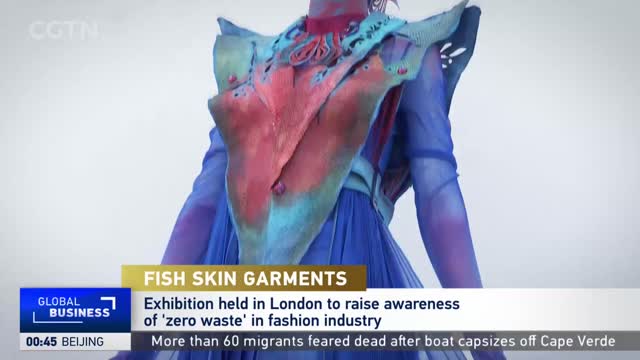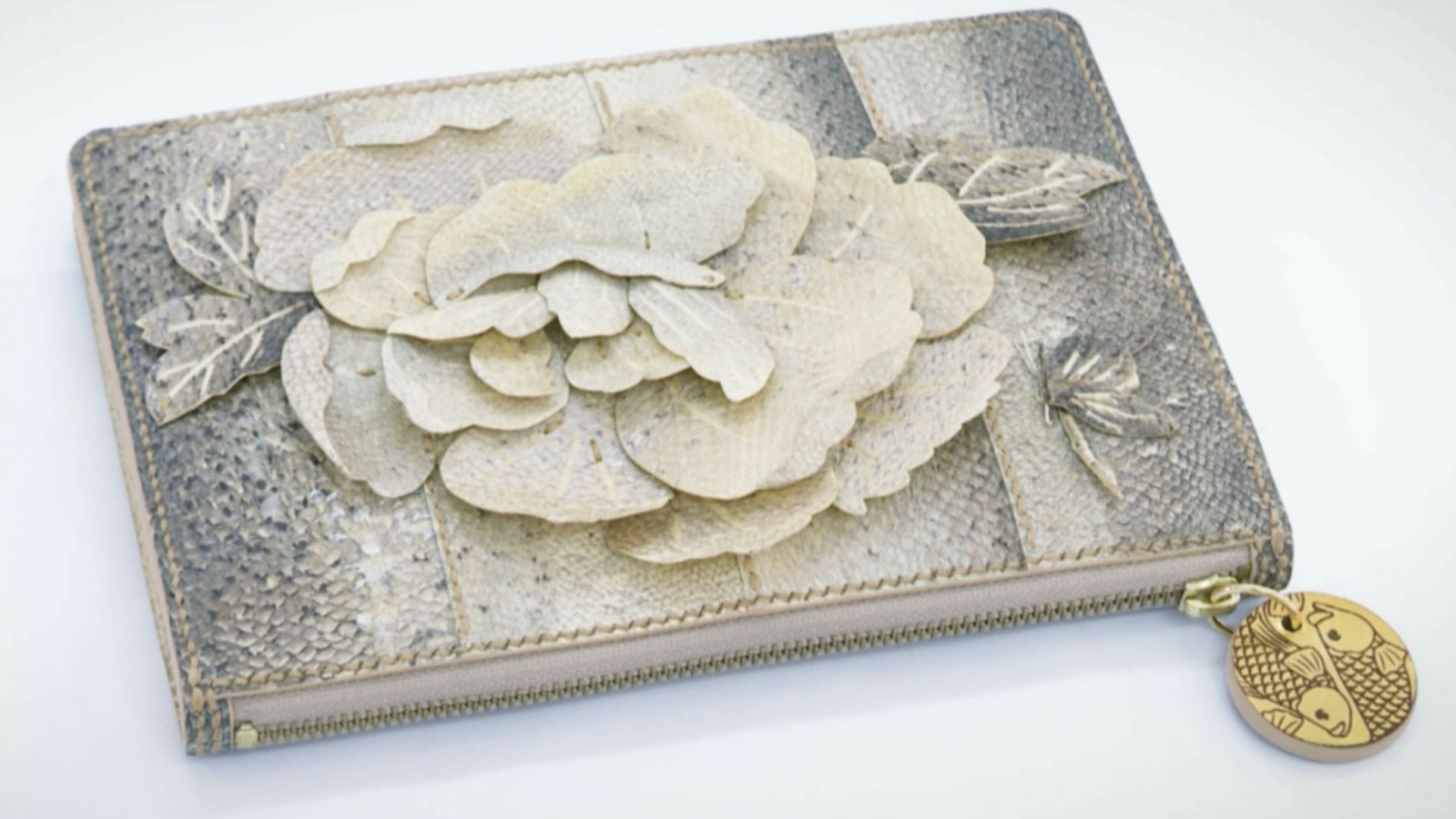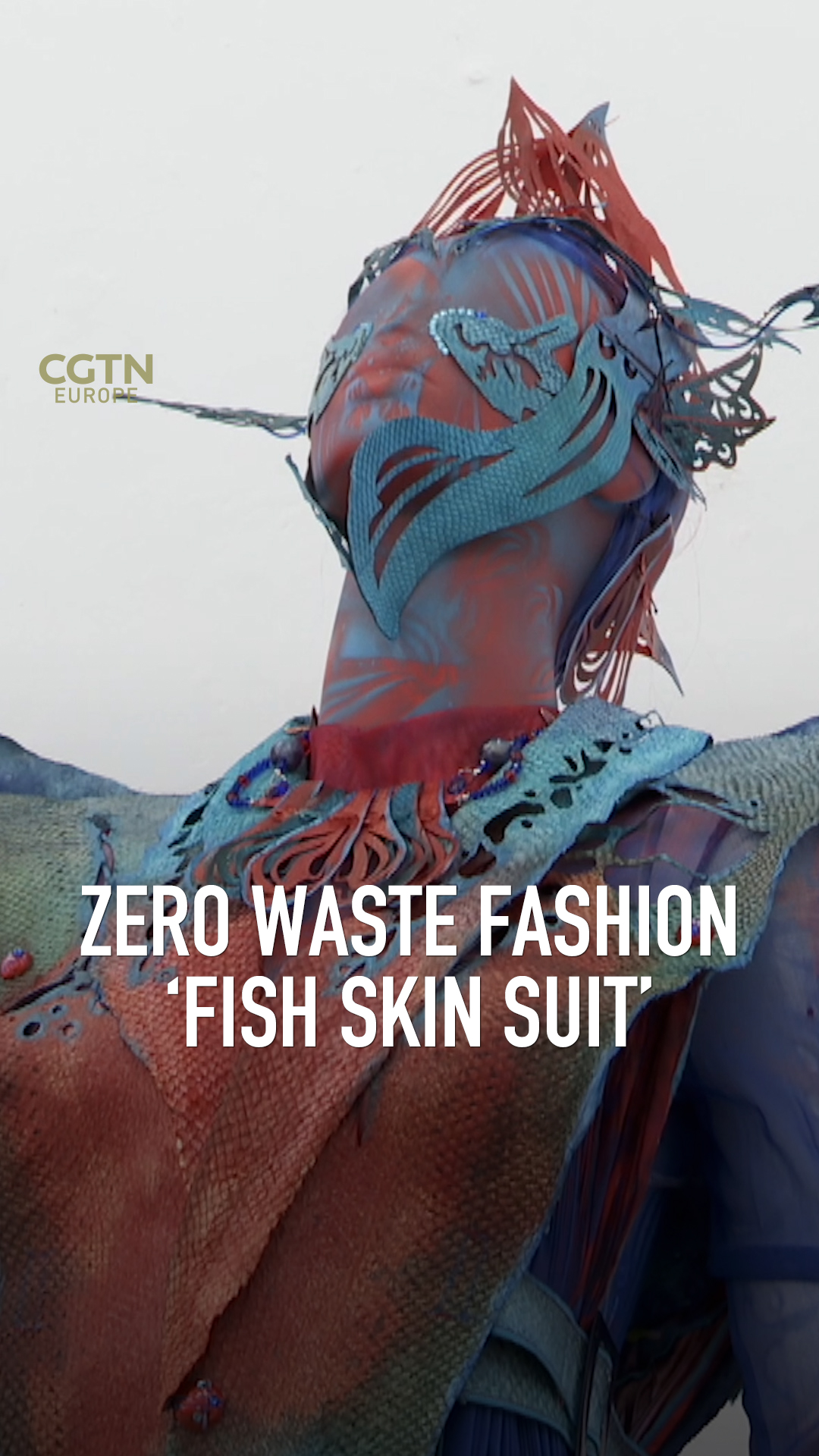03:32

Organizers of a London exhibition featuring garments made of fish skin hope it will help promote "zero waste" in the fashion industry.
The United Nations Environment Programme estimates that fashion accounts for around a tenth of global carbon dioxide emissions, more than the combined amount from international flights and shipping.
The theme of the exhibition at London's Filet Space is 'from the dustbin to the catwalk.' Its curators call the display a showcase of how a new lease of life can be given to fish skin, something usually discarded as food waste.
In addition to clothing, the exhibition includes Chinese shadow play puppetry using fish skin puppets.

An outfit made of fish skin leather by costume designer Lei Jiang. /CGTN
An outfit made of fish skin leather by costume designer Lei Jiang. /CGTN
Lei Jiang is one costume designer seeking to experiment with this unique fabric.
"A lot of designers recently tend to use fish skin to create garments, but I think a lot more designers could use fish skin to try its possibilities, because still very limited fashion brands and designers are using them. But I think [we] could widen the possibilities of it," said Jiang.

A Hezhe fish skin bag, which is made from fish by-products from the Heilongjiang River in Northeastern China's Heilongjiang Province. /CGTN
A Hezhe fish skin bag, which is made from fish by-products from the Heilongjiang River in Northeastern China's Heilongjiang Province. /CGTN
Fish skin was brought to the fashion industry by Salvatore Ferragamo in the 1920s, according to Elisa Palomino, associate researcher from Smithsonian Arctic Studies Centre. "Nordic Atlantic Leather, which now is called Nordic Fish Leather, is the first tannery in the world to start producing fish leather," Palomino told CGTN.
About 40 kilograms of discarded skin is produced with every ton of fish fillets, according to the Commonwealth Fashion Council.
READ MORE
Significant number of Hungary's teachers resign
UK students' mental health woes
Spanish Civil War victim seeks closure
"I think of going back to those materials which are taken from nature, but in a very sustainable way and where the production is extremely sustainable as well," said Palomino.
"There is an amazing movement as well, like of zero waste where everything within the cod or the salmon industry is used. So I think there's really incredible opportunities for this material within the leather working industry."
How to make fish skin clothing
The craft of making fish skin into garments and accessories is an ancient tradition shared by many cultures. Archeological evidence shows the ancient tradition of fish leather production in Scandinavia, Alaska, Japan, Northeast China and Siberia.
Zhang Zhongjin, a postgraduate student from Central Saint Martins College of Art in London, learned the craft from the Hezhe people, an ethnic group that used to live on fishing in northeastern China and whose skin tanning technique dates back hundreds of years.
Zhang explained that the Hezhe people make fish skin garments using the following formula:
1. Remove the fish skin – usually that of salmon.
2. Clean out the remaining meat from it.
3. Give it a deep wash.
4. Stretch the skin over a wooden board and let it dry for as long as two days.
5. Soften the dried fish skin to make it wearable.
00:35

"The Hezhe ancestors respect nature very much, and they would try to take everything from the fish without causing any waste," said Zhang. "For example, they would have to eat the meat and they would use the skin to make garments and shoes to protect themselves. And they would even use fish bone to make armlets or decorations."
Several brands, including Dior, Prada and Nike, have incorporated fish skin leather into their collections and the exhibition organizers hope to inspire tomorrow's generation of designers. As the Hezhe might have said, beauty is only fish skin deep.
Subscribe to Storyboard: A weekly newsletter bringing you the best of CGTN every Friday